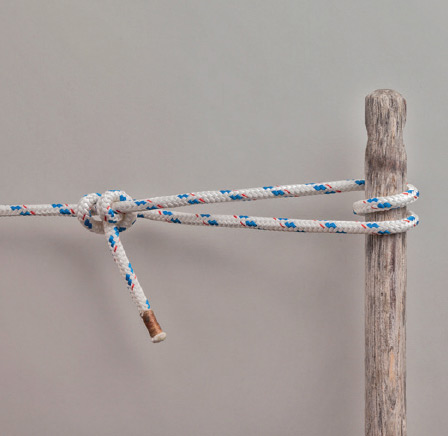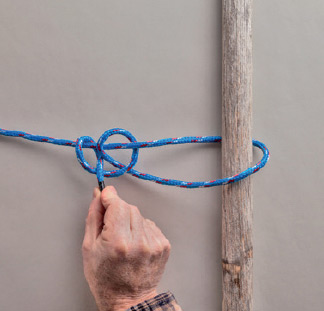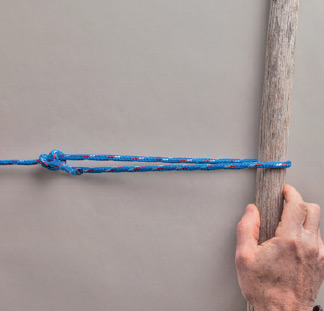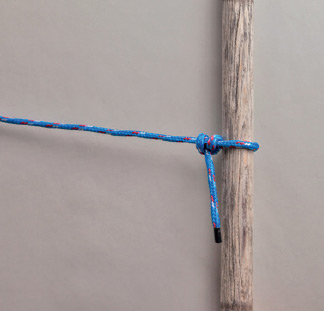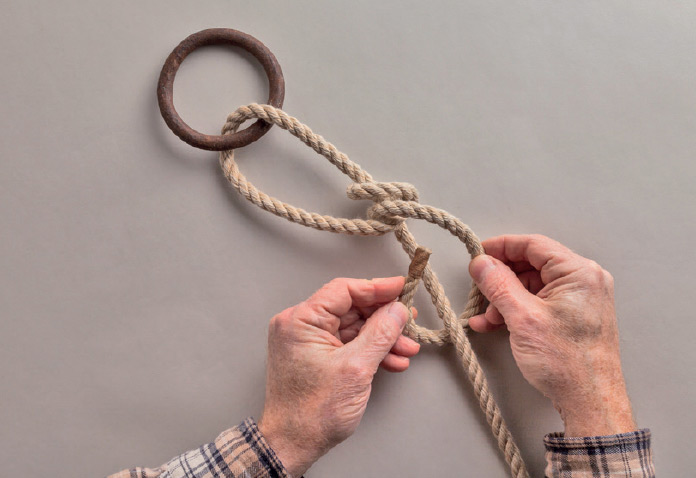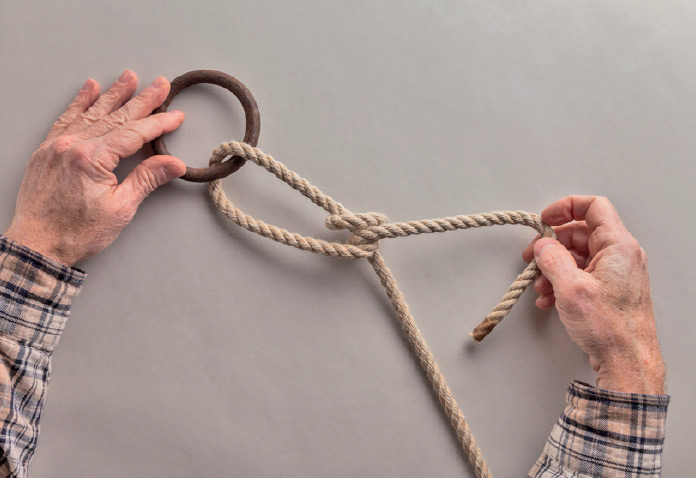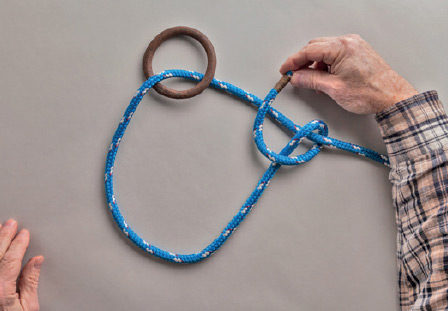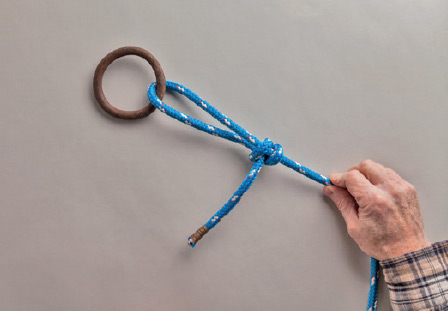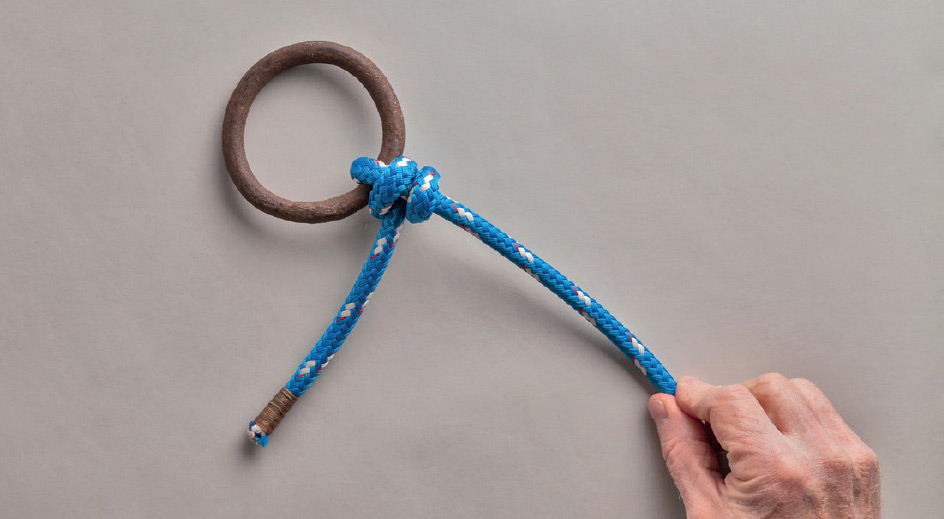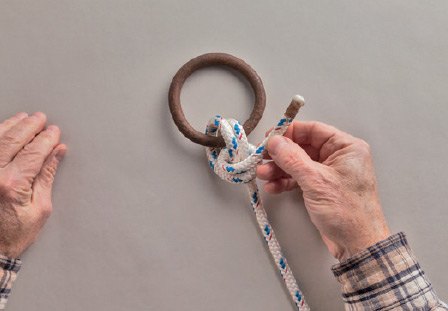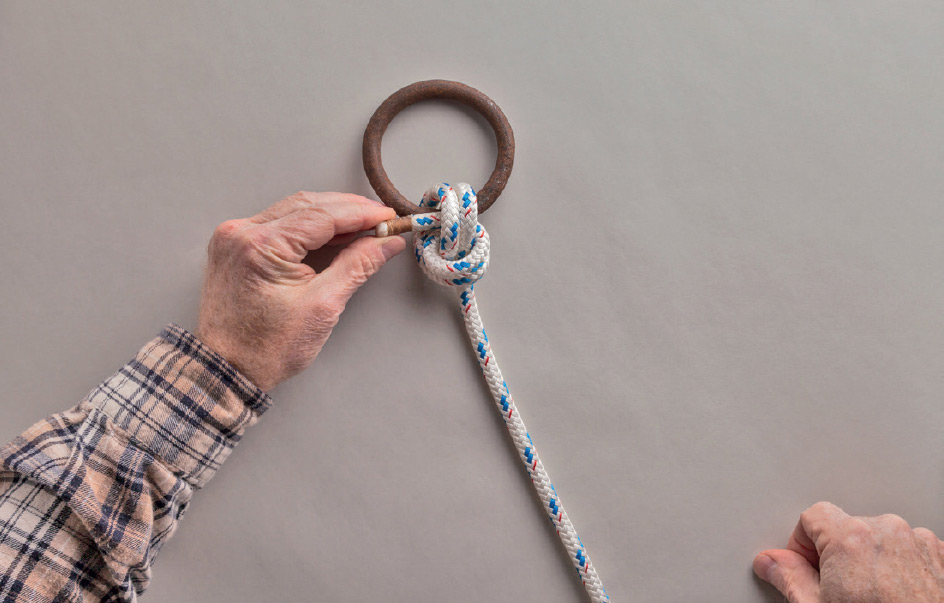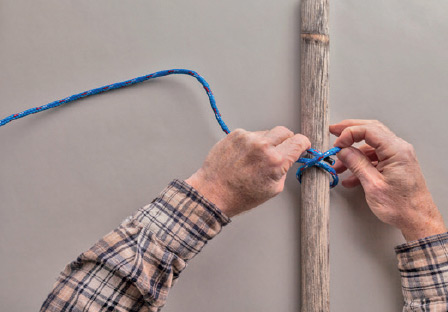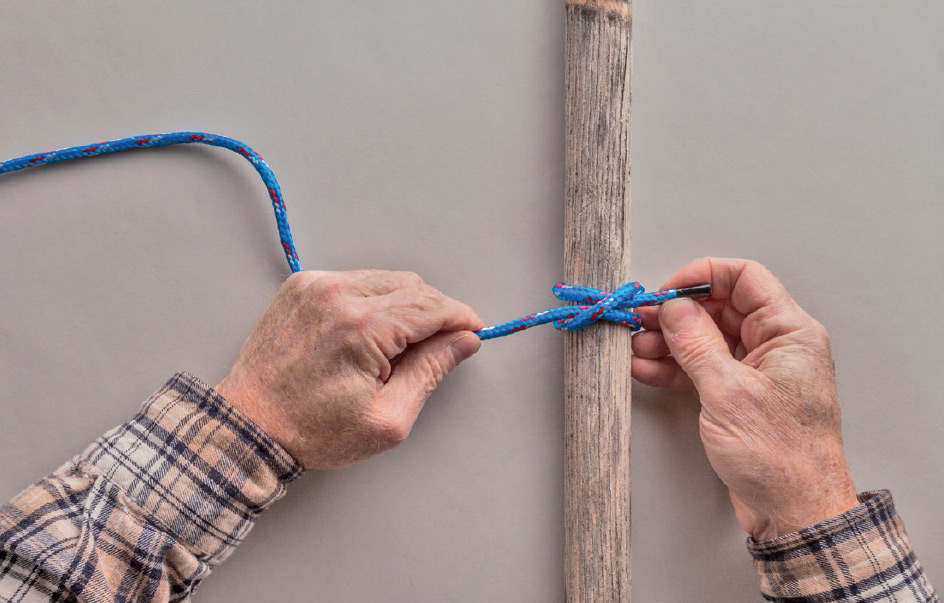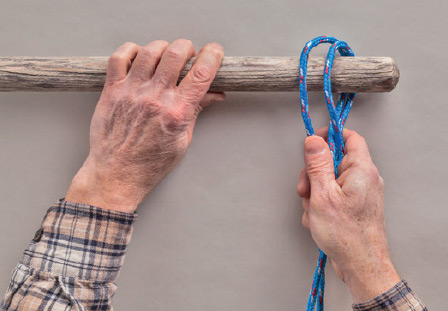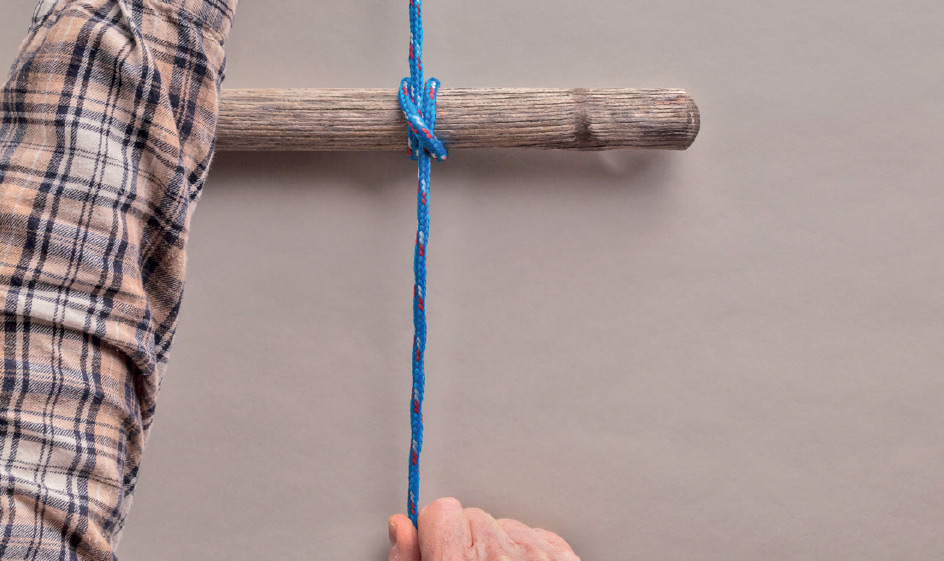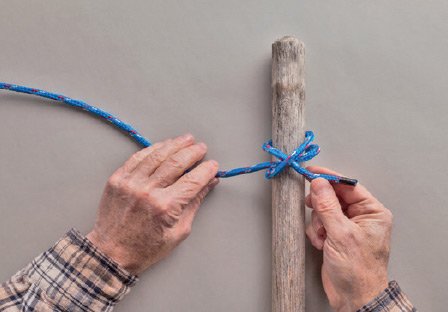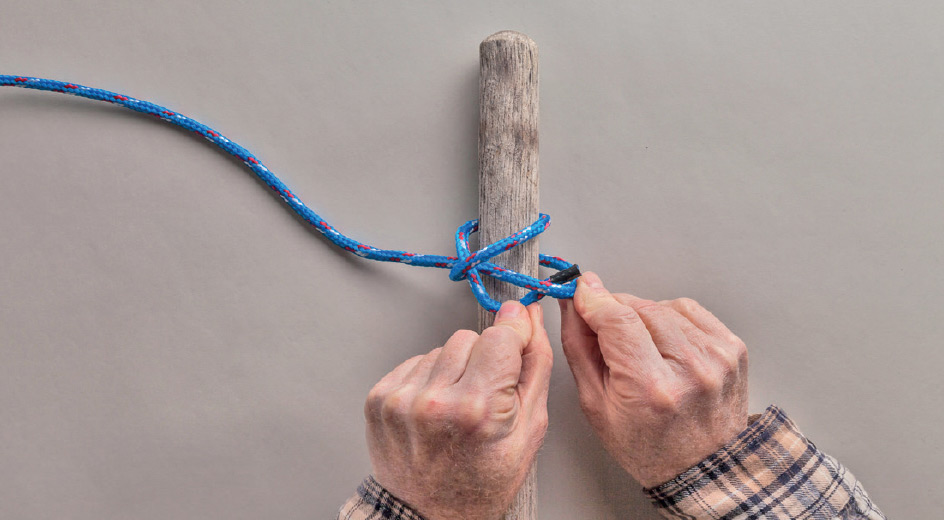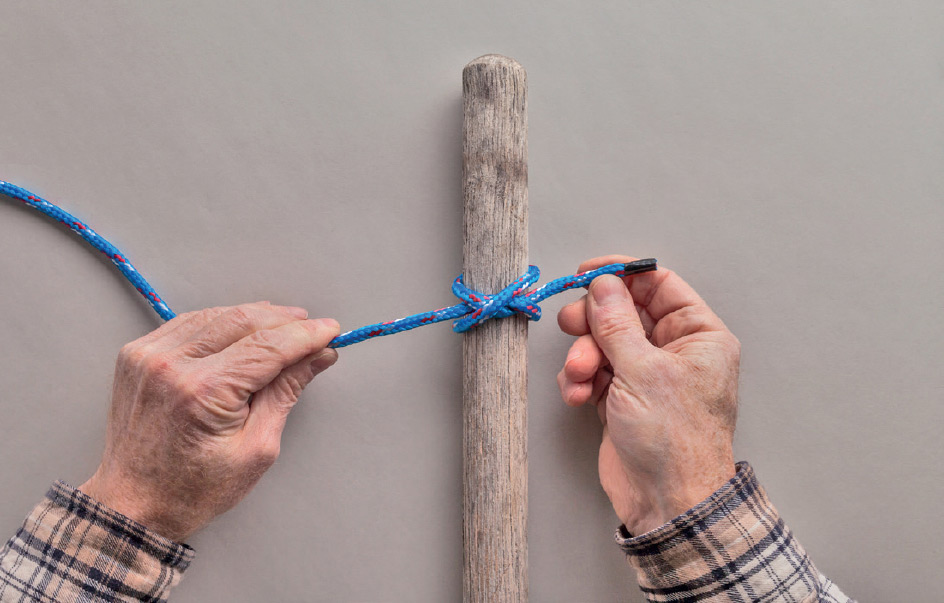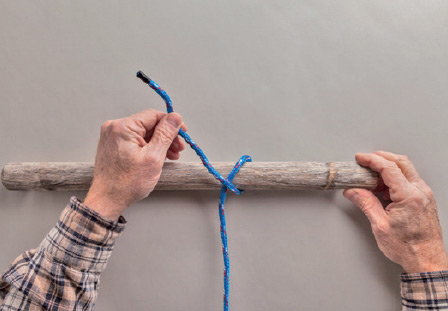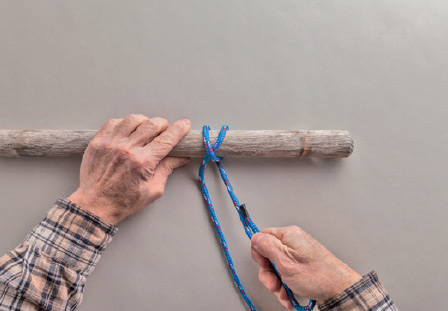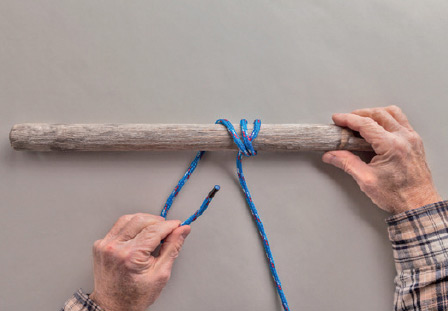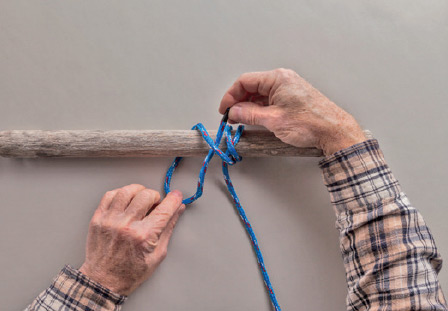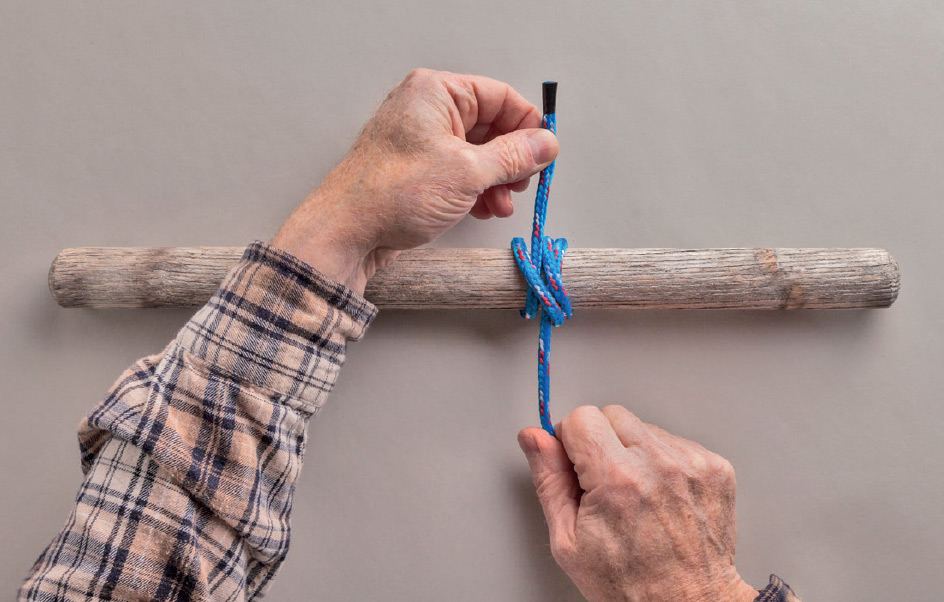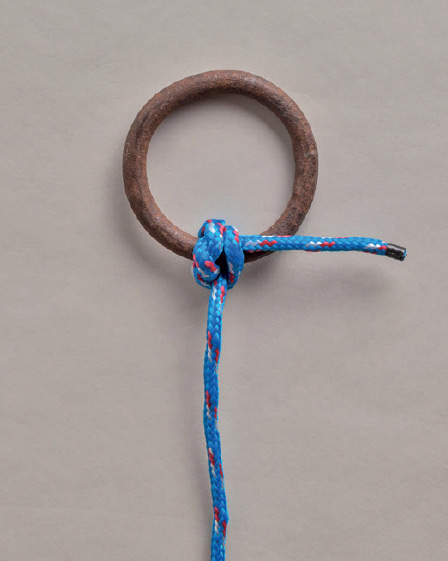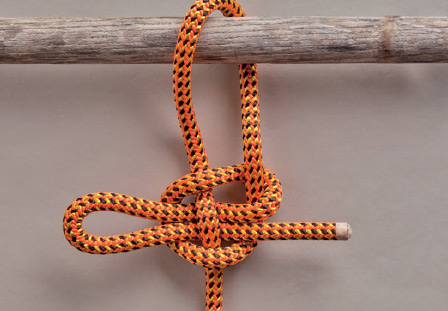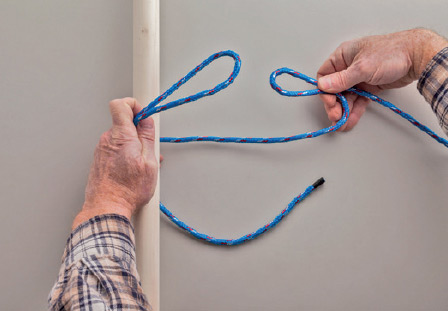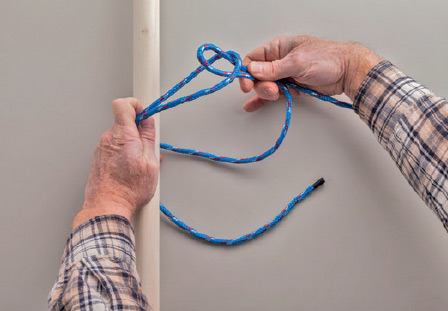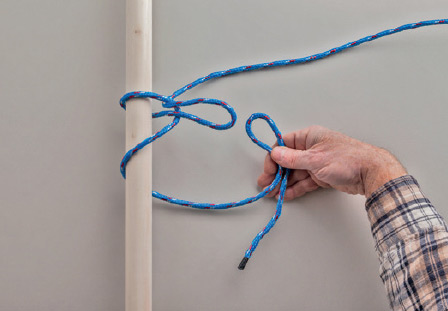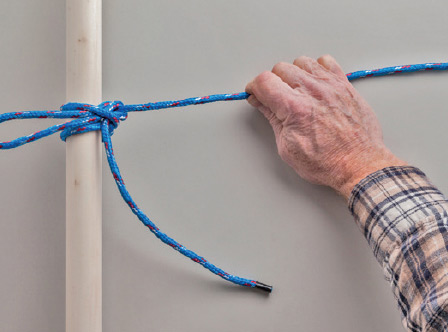Part Seven
Hitches
Tie a hitch when you need to connect two objects with a length of rope. Unlike loop knots, in which the rope is tied to itself and is independent of the object encircled, hitches generally depend upon the object to which they are tied for their form and integrity: remove the object, and there is no knot. They are often tied around roughly cylindrical objects like trees, posts, rails, stakes, poles, bitts, and bollards.
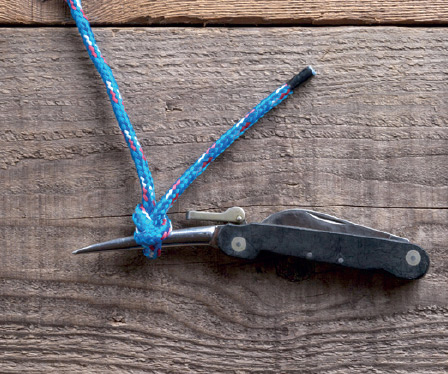
58.
Uses: temporary “handle” for pulling line
Pros: quick, easy, unties instantly
Cons: strictly temporary; can slip
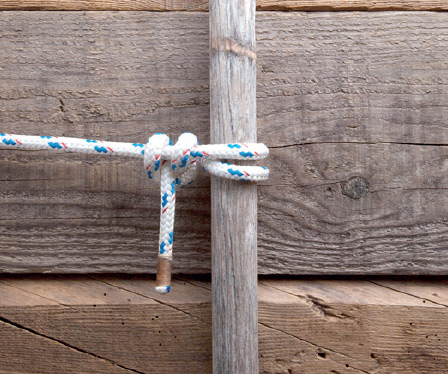
59.
Uses: hitch or adjustable noose for perpendicular loads, e.g., boats, tarp ridgelines
Pros: strong and fairly secure, easy to tie and untie, adjustable
Cons: can slip, adjustment not as secure as Taut Line Hitch
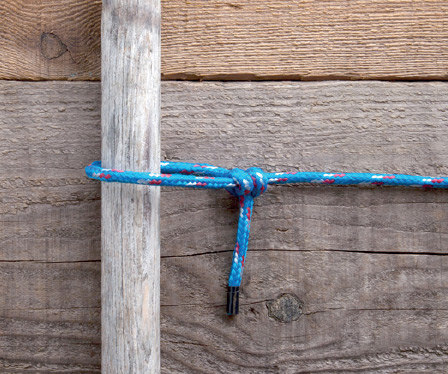
60.
Uses: hitch or adjustable noose for perpendicular loads, e.g., boats, clotheslines
Pros: uses less rope and easier to adjust than Round Turn version
Cons: somewhat less secure than Round Turn version
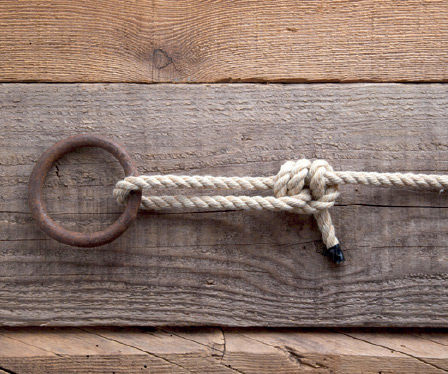
61.
Uses: adjustable hitch; tent and fly guys, cargo tie-down, clotheslines, tarp ridgelines
Pros: tightens easily; holds adjustment better than Two Half Hitches
Cons: can slip, more complicated than Two Half Hitches

62.
Uses: halyards, sail sheets, tarp guy attachment, friction noose
Pros: very secure even if shaken
Cons: difficult to untie

63.
Uses: anchors, grapnels, hitching to a ring
Pros: very secure in slippery line; can be tied loose around the object
Cons: none known
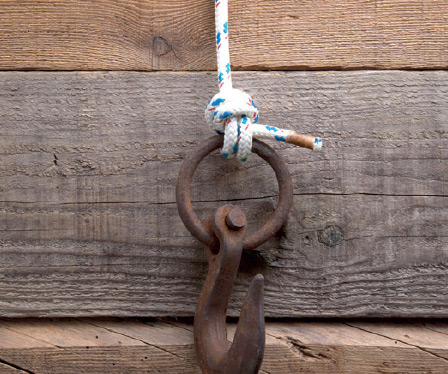
64.
Uses: anchors, grapnels, hitching to a ring
Pros: strong, secure, more compact than Version 1
Cons: strain on rope is greater than Version 1
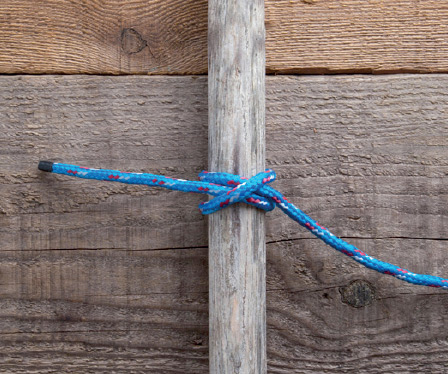
65., 66. (also )
Uses: light-duty hitch for boats, hanging gear; binding knot
Pros: easy and quick to tie
Cons: insecure; can jam
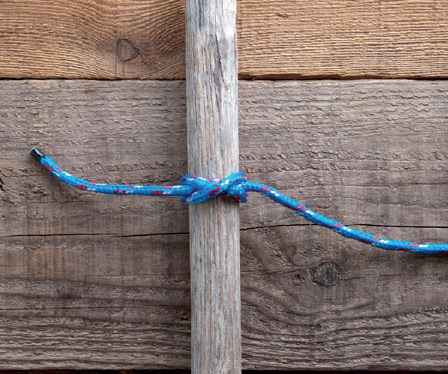
67.
Uses: heavy-duty hitch in thin line; binding; seizing
Pros: very secure, easy to tie; ends can be cut short
Cons: very difficult to untie if tightened hard

68.
Uses: pulling or taking strain off another rope, securing a load in line with fixed object
Pros: secure and easy
Cons: insecure if load is perpendicular to object
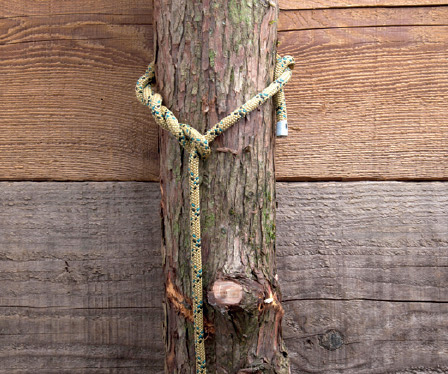
69.
Uses: hauling and lifting large heavy cylinders
Pros: simple to tie, easy to untie
Cons: insecure if load is perpendicular to object
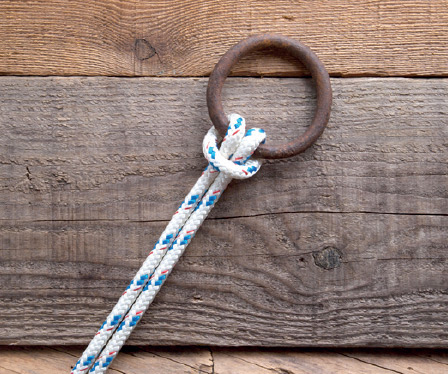
70., 71., 72., 73. Cow Hitch (, , , )
Uses: hitching animals; adding hanging loops or tie-offs to rails, rings, other ropes
Pros: easy and quick to tie by many methods, easy to untie; does not jam
Cons: insecure; unequal loads will shift

74.
Uses: hitching to rails, posts, and rings, hanging gear
Pros: only cow hitch with a single load-bearing part; secure in any direction
Cons: not among the most secure hitches; can be difficult to untie
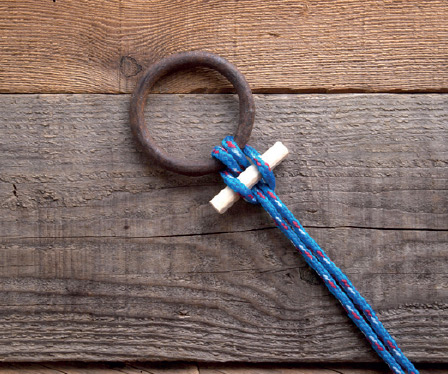
75.
Uses: hanging gear from horizontal ropes or rails
Pros: quick and easy to tie and untie; works when only a bight is available
Cons: insecure; will slip if loaded unevenly; requires a toggle
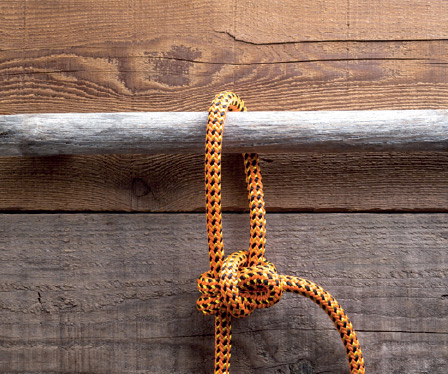
76.
Uses: quick-release adjustable hitch for constant light loads
Pros: releases instantly and adjustable far from the fixed object
Cons: insecure
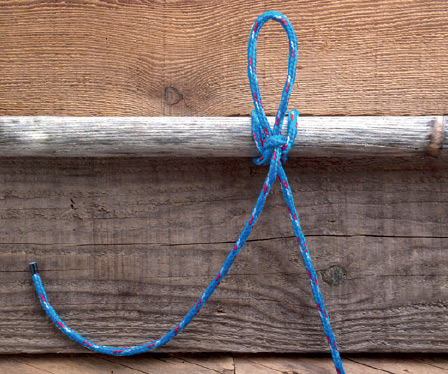
77.
Uses: quick-release hitch for boats or horses
Pros: releases instantly far from the fixed object
Cons: insecure; not adjustable like the Mooring Hitch
with a shaft passed through the drawloop to provide a temporary handle with which to pull the line. It can be used with heavy rope, but its main use is to apply tension on thin stuff that would otherwise cut into your hands. It’s especially useful for pulling thread tight in whippings and seizings (see ). A screwdriver or any other smooth rod can be used in place of a proper marlinespike. Instructions
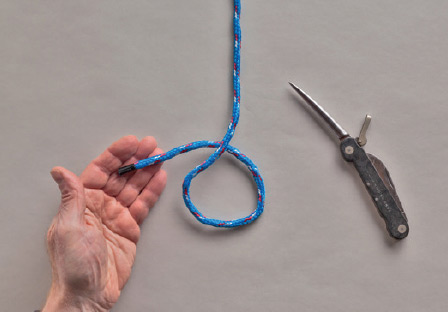
1. Make an underhand crossing turn

2. Position the standing part beneath the crossing turn to make a “pretzel” shape.
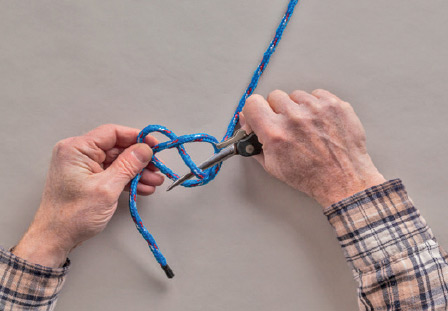
3. Pass the marlinespike over-under-over through the crossing turn: over the top of the crossing turn, under the standing part, and over the bottom of the crossing turn.
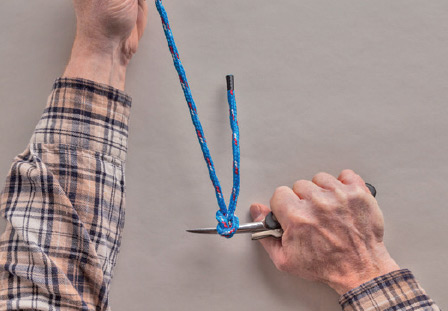
4. Pull the marlinespike so that it draws a bight into the standing part that comes through the crossing turn from back to front. Continue pulling until the crossing turn tightens against the marlinespike.
.
Instructions

1. Make an underhand crossing turn

2. Position the standing part beneath the crossing turn to make a “pretzel” shape.

3. Pass the marlinespike over-under-over through the crossing turn: over the top of the crossing turn, under the standing part, and over the bottom of the crossing turn.

4. Pull the marlinespike so that it draws a bight into the standing part that comes through the crossing turn from back to front. Continue pulling until the crossing turn tightens against the marlinespike.



